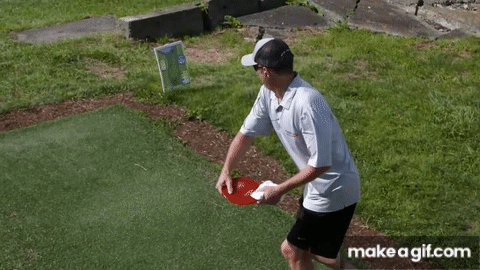- Joined
- Nov 2, 2008
- Messages
- 22,129
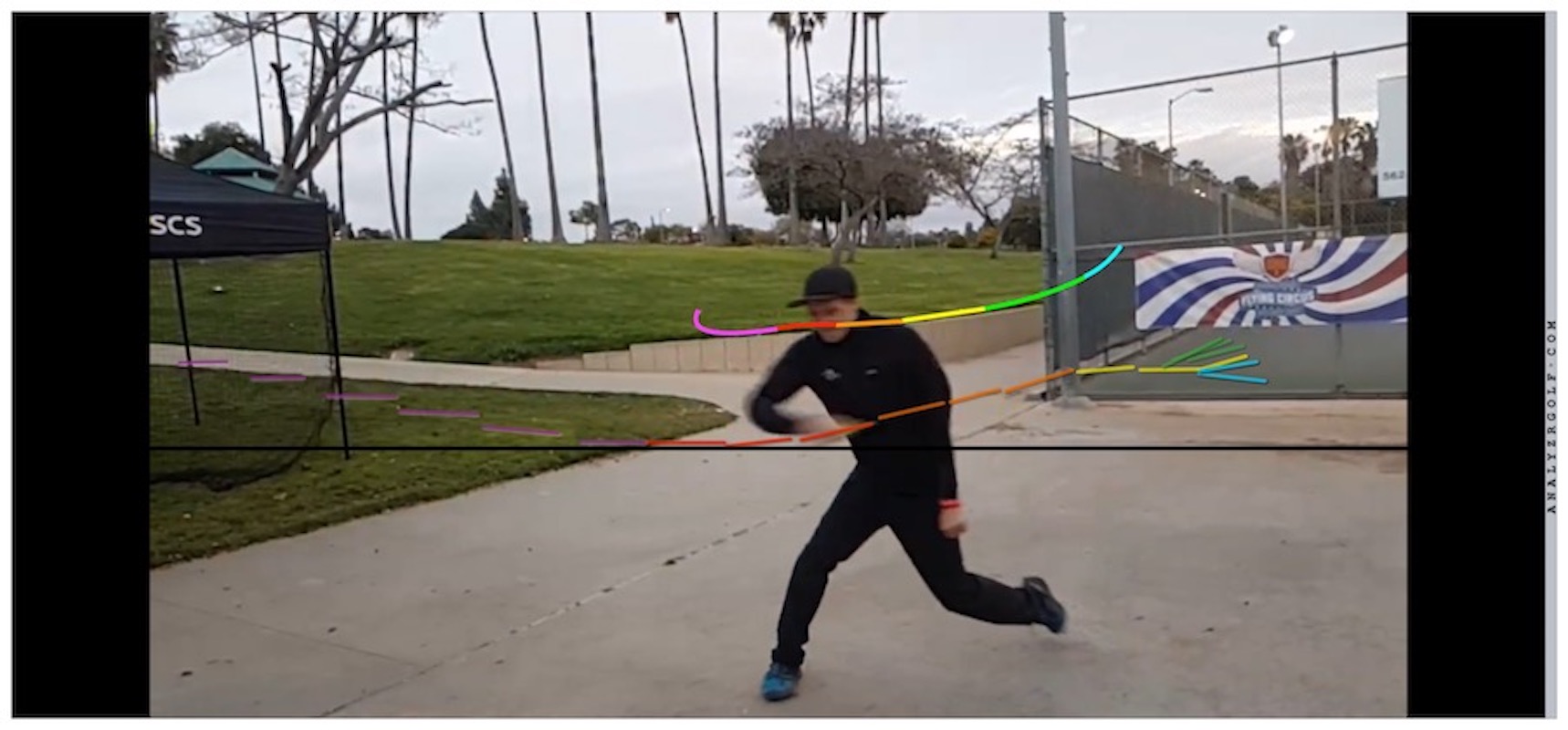
So I think a lot of players really struggle finding that effortless distance because they are trying to throw straight and flat by pulling the disc with the arm in a straight line and trying to manipulate the spin of the disc flat by actively curling the wrist and arm into horizontal flexion and extension, and manufacture the rotation of their body from the rear foot and hips which will just spin everything out and around.
There has to be a rotation/twirl sent up through the torso from bracing up on the front leg and rotation out the shoulder to arm/disc like ball on string to keep the release of the disc on the plane you want without hurting yourself. The rear foot is just driving your center of gravity laterally targetward/forward into a tilted axis to twirl from and countering forward behind the front leg to balance against that big inertial burst pulling your center of gravity targetward.
There will be some rotation from the rear foot leveraging against the ground, but you naturally do this walking and running without trying to rotate! It happens as a byproduct of moving forward with how the body works! You have to shift your weight forward/tilt CoG targetward and naturally swivel your pelvis back and forth to walk straight forward efficiently, but you don't have to think about this. This is the same thing when moving lateral to the target efficiently. You will rotate more in the throw because you are bringing the torso and arm/disc swing back and forth to sling it. If you want to make a bigger burst, then make your swing longer/bigger from your center without tipping off balance and you will rotate everything more by shifting back and forth without spinning the feet in the ground.
This would be a theoretical vertical spine and "Flat Swing Plane". It would be hard and awkward trying to shift from one foot to the other foot maintaining this flat swing plane as gravity works against you. This is why I say Flat doesn't really exist. It's also the most inconsistent angle you could attempt to throw on, 1 degree variation is either hyzer or anhyzer. If you want to throw on 10 degree hyzer or anhyzer and miss by +/- a couple degrees, it's not going to change your shot nearly as drastically.
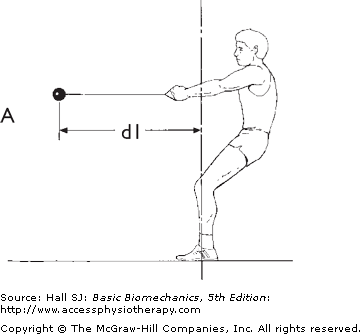
Meanwhile this is totally natural and effortless and working with gravity:
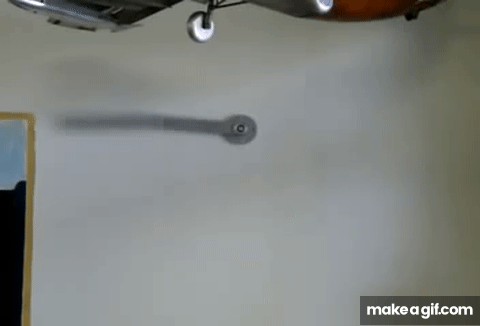
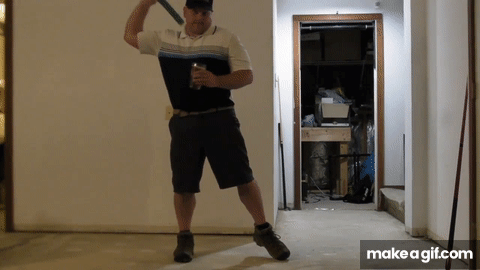


Straight does not Exist! Your stance has be in dynamic alignment to the apex of your shot, either left to right or right to left as there is no such thing as a straight or flat. The disc is either thrown to the left(RHBH) and draw'ed over straight(distance anhyzer/hyzer-flip), or thrown right to left and faded straight(pure hyzer). Your feet have to allow your hips to be setup neutral to your pelvis(hip flexibility) to allow your hips the freedom and natural range of motion to allow the torso to turn back and forth smoothly and effortlessly.
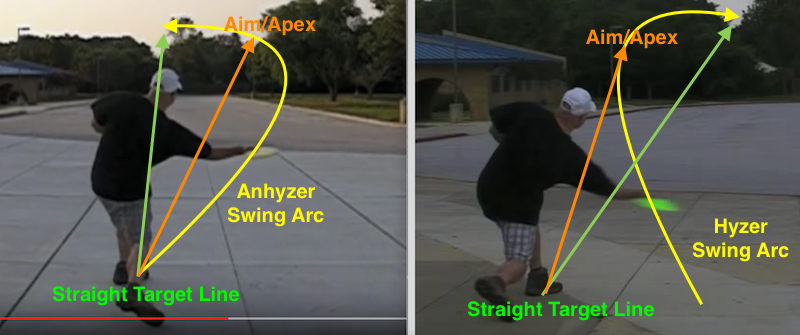
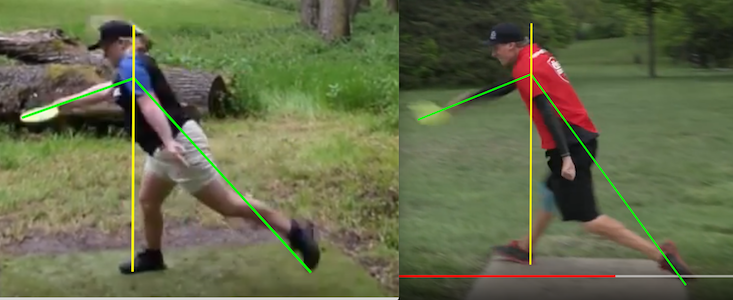
Wide-Narrow-Wide vs Straight
Link to bigger pic: https://i.imgur.com/5851NqB.jpg
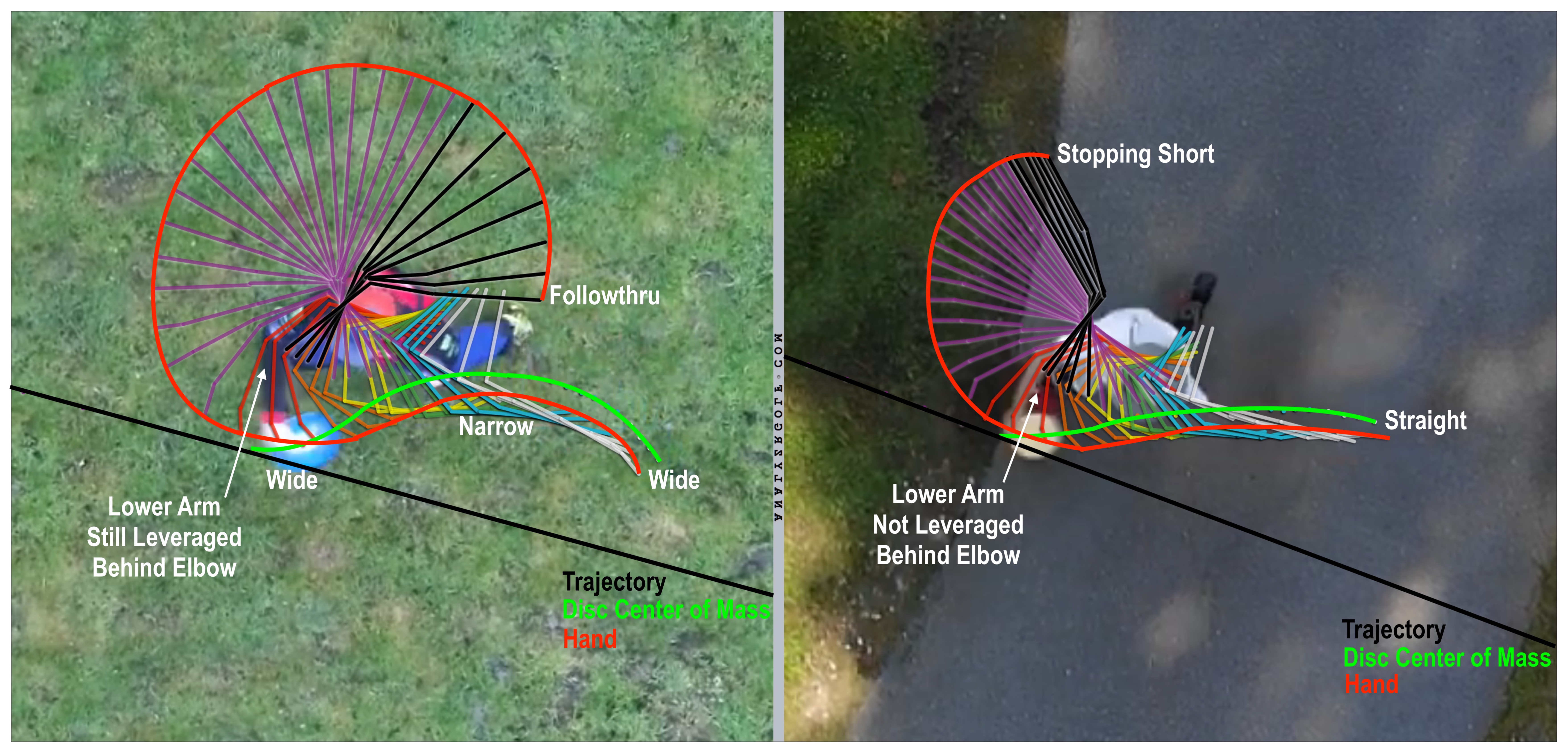
Link to bigger pic: https://i.imgur.com/TlSEKVJ.jpg
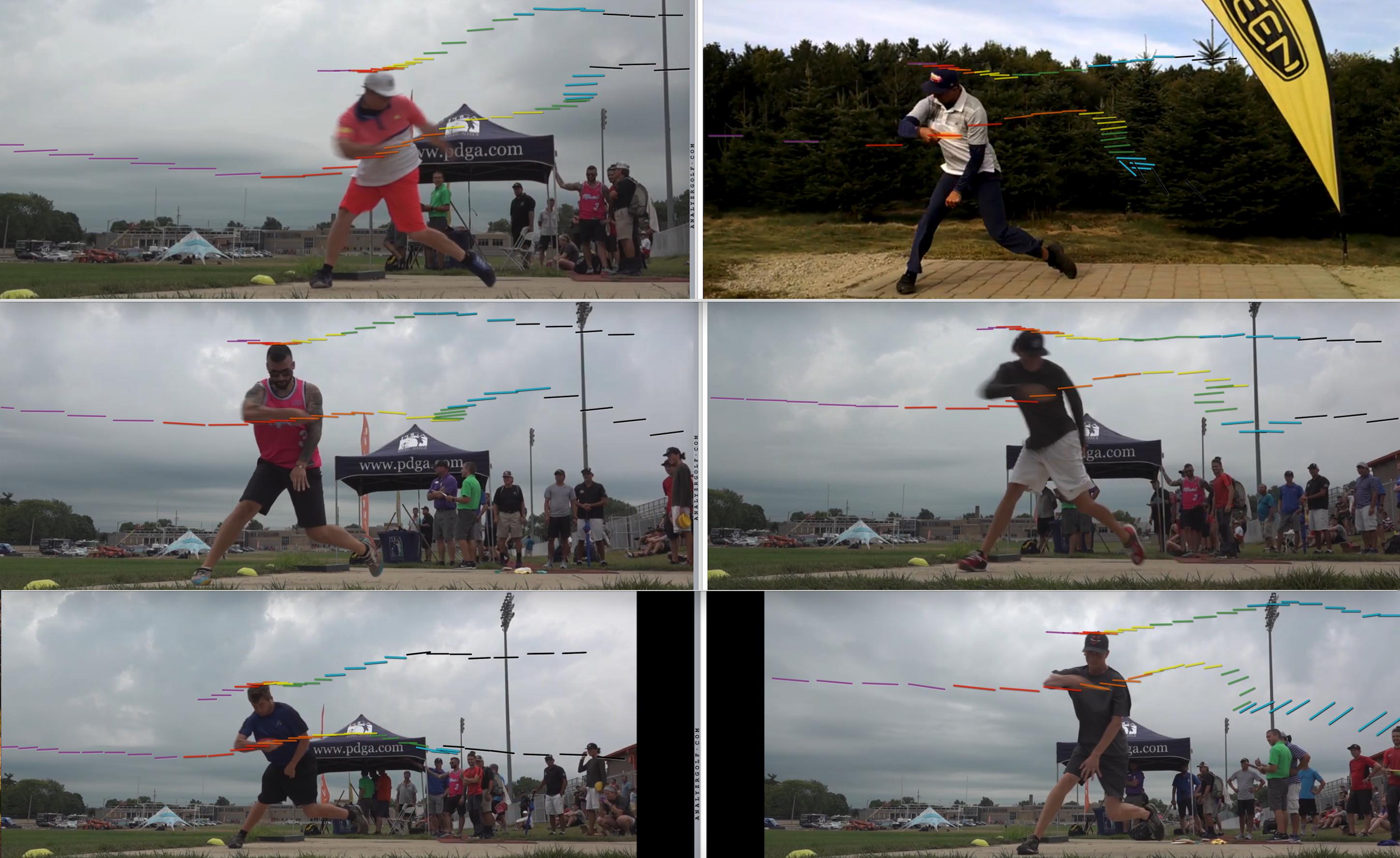
Last edited:



